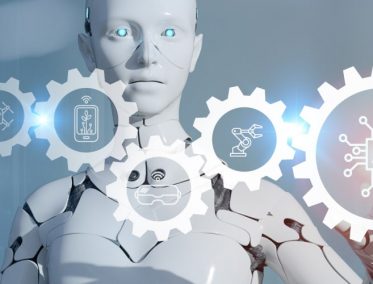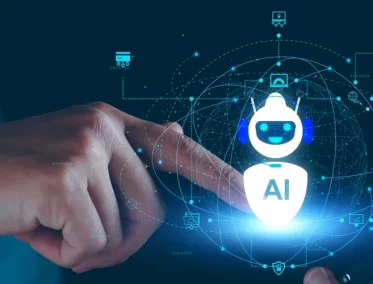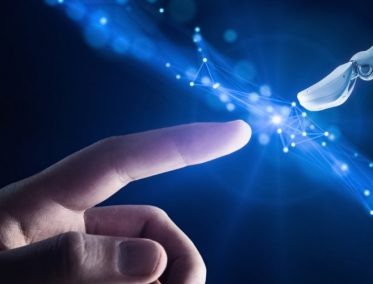In the landscape of automation and artificial intelligence, organizations are constantly seeking innovative ways to enhance efficiency and streamline their operations.
The integration of Generative AI and Robotic Process Automation (RPA) stands as a promising frontier, offering the potential to revolutionize how tasks are automated, decisions are made, and workflows are optimized.
This article embarks on a journey to explore the integration of Generative AI and RPA, shedding light on its significance and the myriad efficiencies it can unlock.
Understanding Generative AI and RPA
Before delving into the integration, it’s crucial to understand the core concepts of Generative AI and RPA:
- Generative AI: Generative Artificial Intelligence is a subset of AI that focuses on generating new content, such as text, images, or even code, based on patterns and data it has learned. It has applications in natural language processing, content creation, and creative tasks.
- Robotic Process Automation: RPA involves the use of software robots or “bots” to automate repetitive, rule-based tasks within business processes. RPA aims to free human employees from mundane tasks, reduce errors, and enhance efficiency.
The Power of Generative AI and RPA Integration
Integrating Generative AI and RPA harnesses the strengths of both technologies, creating a synergy that can drive greater efficiencies across various business domains:
Enhanced Decision-Making
The synergy between generative AI and RPA unlocks enhanced decision-making capabilities for organizations. Generative AI excels in analyzing extensive datasets, extracting meaningful insights, and formulating recommendations.
When these capabilities are integrated with RPA systems, the insights gained can directly feed into and improve decision-making processes. This integration enables organizations to make swift, data-driven decisions with higher accuracy. By leveraging the analytical power of generative AI in conjunction with the operational efficiency of RPA, businesses can optimize their decision-making framework, leading to more informed, strategic choices that can significantly impact their overall performance and success.
Intelligent Automation
The integration of RPA and Generative AI ushers in a new era of intelligent automation. While RPA is adept at automating routine tasks, the addition of Generative AI infuses a layer of advanced intelligence into these processes. This powerful combination enables the handling of more complex and unstructured tasks, broadening the spectrum of processes that can be automated.
As a result, organizations can enjoy more sophisticated automation capabilities, facilitating increased efficiency and innovation across various operational areas. This intelligent automation not only streamlines workflows but also opens up new possibilities for process enhancement and business growth.
Natural Language Understanding
Generative AI’s proficiency in understanding and generating human-like text makes it invaluable for customer service, content creation, and chatbots. By integrating this capability with RPA, businesses can significantly enhance the customer experience. This integration streamlines communication processes, allowing for more natural and effective interactions with customers. It transforms how businesses engage with their audience, offering a more personalized and efficient service, which is particularly beneficial in areas requiring nuanced language understanding and response generation.
Predictive Analytics
The integration of Generative AI with RPA in predictive analytics marks a significant advancement in organizational efficiency. Generative AI’s ability to analyze historical data and predict future trends and anomalies is crucial in forecasting.
When combined with RPA, this predictive power allows organizations to proactively address potential issues, optimize resource allocation, and enhance operational efficiency. This synergy enables businesses to anticipate future needs and challenges, ensuring they remain ahead in a rapidly evolving market landscape.
Scalable Workforce
The combination of RPA bots and Generative AI creates a scalable workforce capable of adapting to fluctuating demands. RPA bots, known for their ability to work tirelessly around the clock, gain an added layer of adaptability when integrated with Generative AI.
This synergy ensures that operations remain consistent and efficient, even as demands and workloads change. This scalable approach is crucial for businesses looking to maintain operational resilience and adaptability in various market conditions.
Improved Compliance
When RPA is combined with Generative AI, it enhances compliance in organizational processes. RPA’s consistent execution of tasks based on predefined rules is complemented by Generative AI’s ability to monitor and analyze data.
This integration strengthens compliance efforts, ensuring that operations adhere to regulatory standards more effectively and efficiently. It provides a robust framework for organizations to maintain compliance, thereby reducing risks and enhancing overall operational integrity.
Data Extraction and Processing
Generative AI significantly enhances the capabilities of RPA in data extraction and processing, particularly from unstructured sources like documents and images. When integrated into RPA workflows, it streamlines tasks such as data entry and validation, making the process more efficient and less prone to errors.
This integration marks a leap forward in handling complex data formats, opening up new avenues for automation and efficiency in data processing tasks.
Hyper-Personalization
Through the integration of Generative AI with RPA, organizations can achieve hyper-personalization in customer interactions. Generative AI’s analysis of customer data enables the generation of personalized content and recommendations.
When this capability is incorporated into RPA workflows, it allows for the delivery of highly personalized customer experiences, enhancing both engagement and satisfaction. This synergy transforms customer engagement, making it more tailored and responsive to individual preferences and behaviors.
Cost Reduction
The integration of Generative AI with RPA offers a significant avenue for cost reduction in business operations. This synergy enhances automation and operational efficiency, leading to considerable savings.
By reducing the reliance on manual labor, minimizing errors, and lowering operational overhead, organizations can achieve a more cost-effective and streamlined operational model.
Competitive Advantage
By integrating Generative AI with RPA, organizations can gain a significant competitive advantage. This combination optimizes processes, enhances decision-making capabilities, and enables the delivery of superior customer experiences.
Such a strategic approach positions organizations to stay ahead in their respective markets, driving innovation and operational excellence.
The integration of Generative AI and RPA represents a transformative leap in how organizations approach automation and efficiency.
By combining the power of AI-driven insights and intelligent automation, organizations can streamline operations, make informed decisions, and deliver exceptional value to their customers.
As this integration continues to evolve, it promises to reshape industries and unlock new horizons of efficiency and innovation.




